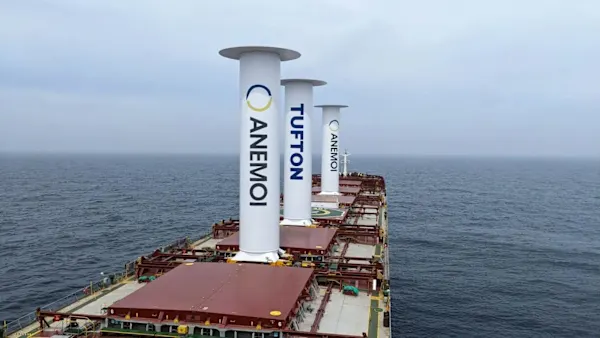By Stuart Smith
Copyright channelnewsasia

New funding from the British government’s Clean Maritime Demonstration Competition (CMDC) will help Anemoi’s engineers develop a folding version of the sail, as well as make aerodynamic improvements.
Its current version – undergoing testing at its facility – was developed from funds won during a previous round.
“The CMDC funding has been put to good use in allowing us to design and develop a smaller rotor sail, which is suited for smaller to medium sized ships,” said Plunkett.
“The fleet of smaller to medium-sized ships is enormous. So, that unlocks a whole new raft of vessels, which can have rotor sails installed and saves all that extra fuel.”
Its most recent at-sea trial, tested in various conditions around the world, found that running the sail saved over 9 per cent of the ship’s fuel. This could cut costs by thousands of dollars a day for the largest ships.
Experts said if each voyage made use of such wind-assist technologies, the industry could reduce its carbon dioxide emissions by as much as the equivalent of what Singapore produces per year.
GREEN ALTERNATIVES
But for the international maritime industry to achieve its carbon neutrality target by 2050, wind-assisted power alone will not be enough.
Through the CMDC, British authorities are providing millions of dollars in funding to develop other green technologies that might help put the sector on a heading for net-zero.